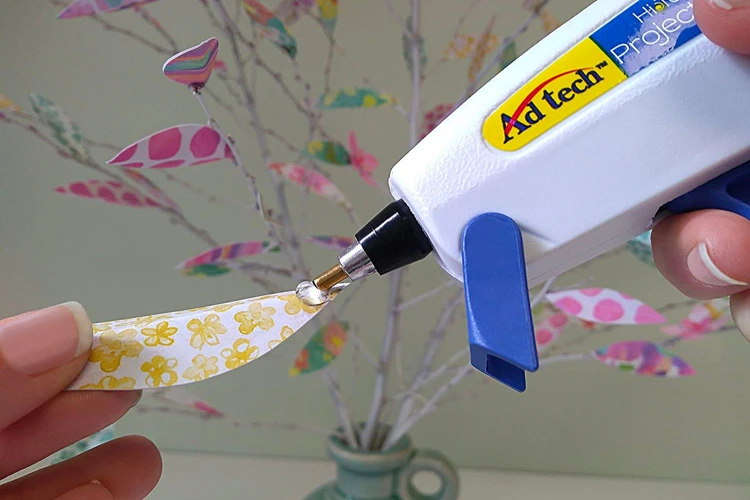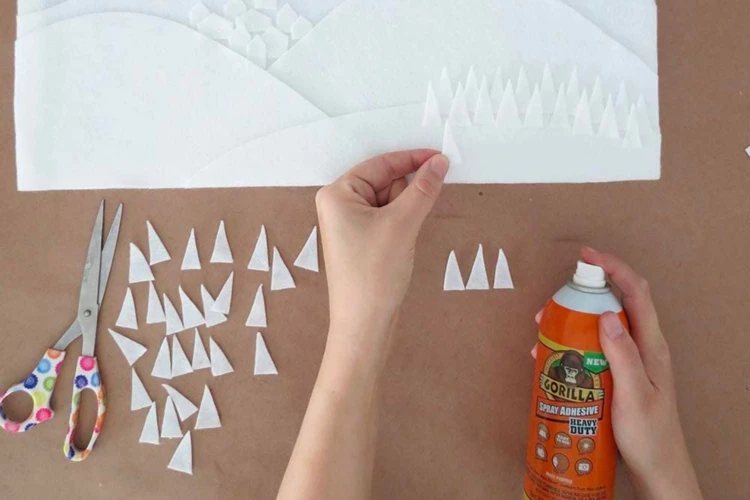When it comes to crafting with cardboard, the adhesive you choose is just as vital as the materials. Not all glues are created equal, and picking the wrong one can lead to frustrating results. This section explores various adhesives and their suitability for cardboard projects.
Gorilla Glue for Cardboard
Gorilla Glue has become synonymous with strength and versatility. Its formulation allows for a strong bond that can withstand both indoor and outdoor conditions, making gorilla glue for cardboard an excellent choice for projects requiring durability. The polyurethane-based adhesive expands as it dries, filling in any gaps and creating a tight seal.
Strong Glue for Cardboard
Searching for strong glue for cardboard means looking beyond general-purpose adhesives to those specifically designed to bond paper products. PVA (polyvinyl acetate) glues, such as white glue or school glue, form a robust bond on porous materials like cardboard, setting quickly and drying clear.
Wood Glue on Cardboard
Surprisingly, wood glue on cardboard can be effective, especially when dealing with corrugated cardboard that mimics the fibrous structure of wood. Wood glue, usually a type of PVA glue but with a thicker consistency, can create a powerful bond that is ideal for cardboard furniture or structural projects.
Choosing the Right Glue for Your Cardboard Project
Your project’s success hinges on selecting the right adhesive. Let’s break down the factors you should consider to ensure your cardboard creation holds up over time.
Assessing the Material and Project Type
Consider the type of cardboard you’re using and the nature of your project. Corrugated cardboard requires a different approach compared to thin cereal box material. The purpose of your creation — be it functional or decorative — also impacts your choice of glue.
Comparing Bonding Time and Strength
Adhesives differ in how quickly they set and how strong they cure. Some provide a quick bond that’s helpful for rapid assembly, while others take longer to set but offer a more formidable connection. Align your choice with the needs of your project’s timeline and durability.
Considering the Finish and Color
The aesthetic outcome is crucial for display projects. Glue that dries clear might be preferable to avoid unsightly seams. Additionally, some adhesives leave a glossy finish, while others are matte. Consider the finish and whether the glue’s color will blend seamlessly with your cardboard.
Evaluating Safety and Usage
Lastly, think about safety and ease of use. Non-toxic, water-based glues are ideal for children’s projects, while stronger, solvent-based adhesives might be reserved for adult crafters. Also, the application method — whether it’s a squeeze bottle or a brush — can affect the precision and cleanliness of your work.
Step-by-Step Guide to Gluing Cardboard
Now that you’ve chosen your adhesive, let’s dive into the process of creating a solid bond between your cardboard pieces.
Preparation of Surfaces
Begin by ensuring that the surfaces to be glued are clean, dry, and free of any dust or oils. If necessary, lightly sand the edges to create a texture that the glue can grip onto more effectively.
Application Techniques
Apply the glue evenly, using just enough to cover the surface without excessive overflow. For larger areas, a spreader can help distribute the adhesive. Align the cardboard pieces carefully before pressing them together, and wipe away any excess glue that seeps out.
Drying and Curing Time
Follow the manufacturer’s instructions for drying times. Use clamps or weights to hold the pieces in place, ensuring a tight bond as the glue sets. Remember that full curing might take longer than the initial set, so be patient before testing the strength of your bond.
Troubleshooting Common Issues with Cardboard Gluing
Even with the right preparation, you might encounter some hiccups when gluing cardboard. Here’s how to overcome these challenges.
How to Deal with Weak Bonds
If your bond isn’t as strong as expected, it could be due to insufficient glue or improper drying time. Re-glue using a slightly larger amount of adhesive and ensure that the pieces are clamped together firmly as they dry.
Preventing Warping and Bubbling
Warping and bubbling often occur when too much glue is applied. To prevent this, use a thin, even layer of adhesive and ensure the cardboard is flat while drying. Balancing the moisture content by applying glue to both sides of the cardboard can also help.
Avoiding Clumping and Excessive Drying
Adhesive clumping can create an uneven surface, while glue that’s dried out before application won’t bond effectively. Keep your glue cap tightly closed when not in use, and apply the adhesive smoothly to avoid clumps.
FAQs: Everything You Need to Know About Gluing Cardboard
Let’s address some frequently asked questions to clarify any remaining uncertainties about cardboard adhesives.
Can Gorilla Glue be used on cardboard for durable bonding?
Yes, Gorilla Glue can be used on cardboard to achieve a durable bond. Its expanding properties fill in the corrugated layers, creating a strong hold suitable for long-term projects.
What makes glue strong enough for cardboard crafts?
A glue’s viscosity, its ability to penetrate the cardboard fibers, and its drying properties contribute to its strength. PVA-based adhesives are typically strong enough for most cardboard crafts.
Is wood glue effective on cardboard materials?
Wood glue can be effective on cardboard, particularly when it comes to projects that require a sturdy bond. Its thick consistency works well with the fibrous nature of corrugated cardboard.
Expert Tips for Achieving the Best Results with Cardboard Glue
- Test your glue on a scrap piece of cardboard to gauge its performance.
- Remember that less is often more; avoid over-gluing to prevent warping.
- Allow ample time for the glue to cure fully before handling the bonded pieces.
When working on your DIY projects, knowing the right adhesive techniques for different materials can be incredibly useful. If you’re looking to master how to glue cardboard, our step-by-step guide will provide you with all the tips and tricks you need. In addition, if you’re delving into other craft materials, you might want to explore our tutorials on how to glue paper, how to glue plastic, and how to glue canvas to ensure your projects hold together perfectly. Whether you’re crafting a collage, assembling a model, or creating your own canvas artwork, these resources will help you achieve a professional finish on all your creative endeavors.
Final Thoughts: Selecting the Best Glue for Your Cardboard Creations
To sum up, the key to successful cardboard gluing lies in choosing the right adhesive, preparing your surfaces well, applying the glue correctly, and allowing sufficient time for it to set. With these tips in mind and a little practice, you’ll be on your way to creating sturdy and lasting cardboard constructs.


